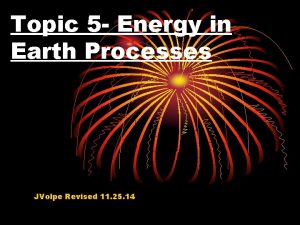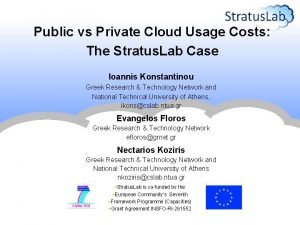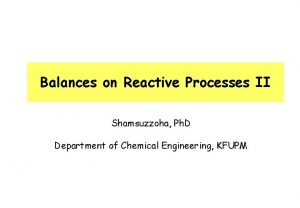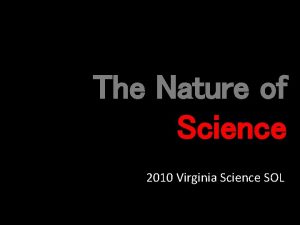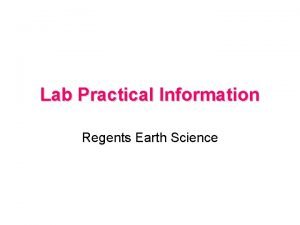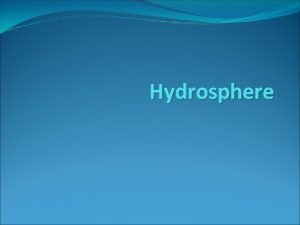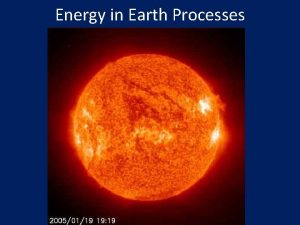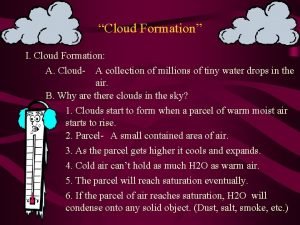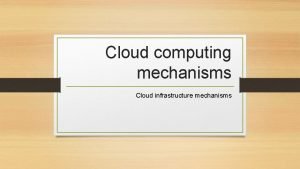Energy in Earth Processes Earth Science Mr Cloud


















- Slides: 18

Energy in Earth Processes Earth Science Mr. Cloud

Energy • • - Energy: is the capacity or ability to do work. The capacity to make a change. Energy comes in many forms: Chemical Energy Radiant Energy Solar Energy Thermal Energy Mechanical Energy Nuclear Energy Electrical Energy is expressed in units of work Joules (k. J, J) or Calories (kcal, cal)

Energy • Thermodynamics: the study of energy and its transformation

Energy • 1 st Law of Thermodynamics – • Law of Conservation of Total Energy • energy can change forms, but is not created or destroyed • Where does the energy to light your home come from? • Using you knowledge of the 1 st Law of Thermodynamics, arrange the following forms of energy in the proper order. Discuss how one form transforms into another.

Potential vs. Kinetic Energy Stored Energy of Motion

1 st Law of Thermodynamics • • • Forms of Energy: Kinetic energy Potential energy electrical energy mechanical energy • heat energy • electromagnetic energy


Temperature v. Heat What is the difference between temperature and heat? Use your review books to figure it out. 2009 Edition: Topic 5

Temperature • A measure of the average kinetic energy of the particles of a body of matter. • Thermometer: instrument that measures temperature • How does temperature relate to the amount and type of electromagnetic energy radiated from a body of matter? Three temperature scales: Celsius, Kelvin, Fahrenheit

Heat Energy • Transfer of energy from regions of high temperature to areas of lower temperature. SOURCE SINK High Temperature! Low Temperature !


Heat Calculation: Enthalpy Q=m c ΔT. . specific heat Heat (Joules) (J/g. o. C) Mass (g) change in temperature (o. C)

Heat Calculation • A student uses a Bunsen Burner to heat a test tube filled with 25 g of liquid water. The temperature of the water increases from 10 o. C to 15 o. C. • How many joules were absorbed by the water? • 25 g. 4. 18 J/g. o. C. 5 o. C • 522. 5 J

Heat Calculation • A student cools a 36 g sample of granite from 200 o. C to 125 o. C. How many joules were released from the sample? 2133 J

Types of Energy Transfer 1. Conduction 2. Convection 3. Radiation

Conduction: ‘Touch’ • Energy transfer by molecular or atomic collision • Metals are the best conductors of heat energy

Convection: ‘Density’ • Heat transfer driven by differences in density • Heat transfer within fluids

Radiation • Energy transfer via electromagnetic waves • No medium required Sunlight radiates towards Earth at various wavelengths
 Identify the parts of the wave
Identify the parts of the wave Concurrent processes are processes that
Concurrent processes are processes that What is her favourite subject
What is her favourite subject Energy energy transfer and general energy analysis
Energy energy transfer and general energy analysis Energy energy transfer and general energy analysis
Energy energy transfer and general energy analysis Cloud computing refers to
Cloud computing refers to Cloud integration patterns
Cloud integration patterns Public cloud vs private cloud cost analysis
Public cloud vs private cloud cost analysis Share data
Share data Balances on reactive processes
Balances on reactive processes What letters designate an air mass from the gulf of mexico?
What letters designate an air mass from the gulf of mexico? Earth science sol 2010
Earth science sol 2010 Earth science regents lab practical review
Earth science regents lab practical review Part d earth science regents
Part d earth science regents Earth science lab practical
Earth science lab practical Earth science grade 9
Earth science grade 9 Dynamic equilibrium earth science
Dynamic equilibrium earth science Hydrosphere includes all the
Hydrosphere includes all the 4th grade science jeopardy
4th grade science jeopardy
